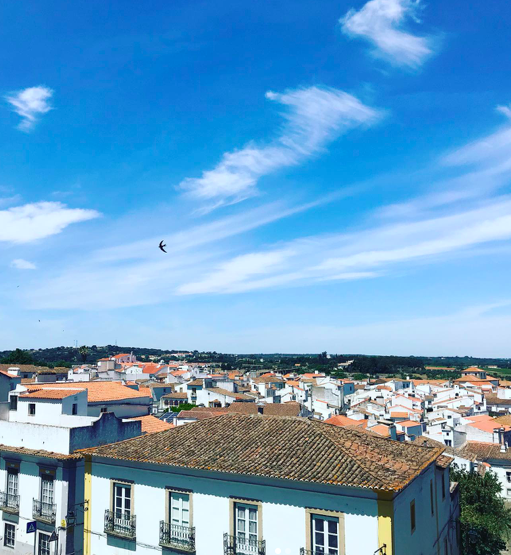
Earlier this month I visited Portugal for the first time, where I found much to love: the vertiginous cliffs overlooking the Nazaré beach, the ubiquitous custard tarts and dessert wines, the labyrinth of secret passages that veins Lisbon’s Alfama neighborhood. Uncultured nature-loving heathen that I am, however, I found myself most drawn to the country’s wildlife — namely, to its swifts.
The common swifts, Apus apus, gathered each evening above Lisbon’s streets and squares, sharp black chevrons silhouetted against purpling sky, the very picture of grace and velocity. They rocketed down alleys and wheeled past balconies, accelerating into turns so steep and sudden they would have made Maverick pass out. All the while they shrieked at each other, shrill and raucous — a nightly production of avian cacophony called, perfectly, a “screaming party.” And then, though I never quite saw them do it, they disappeared into the heavens, an ascension known, for its synchronicity with evening prayers, as a “vesper flight.” (The first rule of swifts is that their every behavior must have an odd and charming name.)
“Vesper Flights” is, not coincidentally, the title of an essay collection by the estimable British nature writer Helen Macdonald; the book bears a swift, outstretched and eye glittering, on its cover. In the titular piece, Macdonald explicates the mind-blowing biology of swifts, virtuosic flyers who, after fledging, can go two years without touching earth. Each night, swifts fly as high as six thousand feet to sleep on the wing — a fact discovered by a World War I-era French aviator who blundered into a flock deep in slumber, “miniature black stars illuminated by the reflected light of the moon.” But they don’t just climb to such great heights to snooze: They also feel the rush of high-altitude air flows and so forecast incoming weather systems, and calibrate their internal magnetic compasses against stars and polarized light. “They’re quietly, perfectly, orienting themselves,” Macdonald writes.
Although I certainly consider myself a Macdonald fan — like everyone who read it, I’ve fantasized about living with a goshawk since devouring H Is for Hawk — I confess that I didn’t initially adore Vesper Flights. Its short essays felt fragmentary and fleeting; many ended abruptly just as they began to build momentum. And its swift meditation, however remarkable its facts, left me a little cold. Swifts, Macdonald wrote, had become her “fable of community, teaching us about how to make right decisions” in the face of COVID and other tumult. This seemed like a lot of metaphorical weight to pile on her avian subject: Wasn’t the astonishing natural history enough? Couldn’t swifts just be, you know, birds?
When I was in Portugal, I pulled up Macdonald’s essay again, nearly three years after I’d first read it in the New York Times Magazine, to refresh myself on the basics of swifthood. My experience of the piece was transformed; indeed, it struck me as one of the loveliest works of nature writing I’d ever encountered. Having never experienced flesh-and-blood swifts before, I’d failed to appreciate how perfectly Macdonald had evoked them. (The observation that “their surfing and tacking against the pressures of oncoming air make visible the movings of the atmosphere” struck me as especially apt, in how it captured their oneness with the sky, these creatures who never land.)
And, too, swifts were so charismatic that of course they made sense as parables and spiritual guides; you could hardly observe such bewitching birds without feeling connected to them (not least because they operate in cities, fundamentally human spaces; they both belong to our world and exist apart from it). Reading about swifts in Portugal was like, I don’t know, reading Joyce in Dublin: The work helps you appreciate the place, sure, but the place also helps you appreciate the work, that magical transubstantiation of setting and literature.
I returned from Portugal with a ceramic swift — the kind of tchotchke that I virtually never get on vacation, but that seemed the perfect remembrance of our trip. My swift is inert, incapable of screaming parties or vesper flights or any of the other behaviors that make these animals extraordinary. Yet in the graceful sweep of its molded wings, it nonetheless captures something of its species’ dynamism and speed; it does in porcelain the work that “Vesper Flights” performs in prose.
….and go out to witness our white-throated swifts mating in the air…they do it along the cliffs in the Colorado National Monument and anywhere along our canyon cliffs